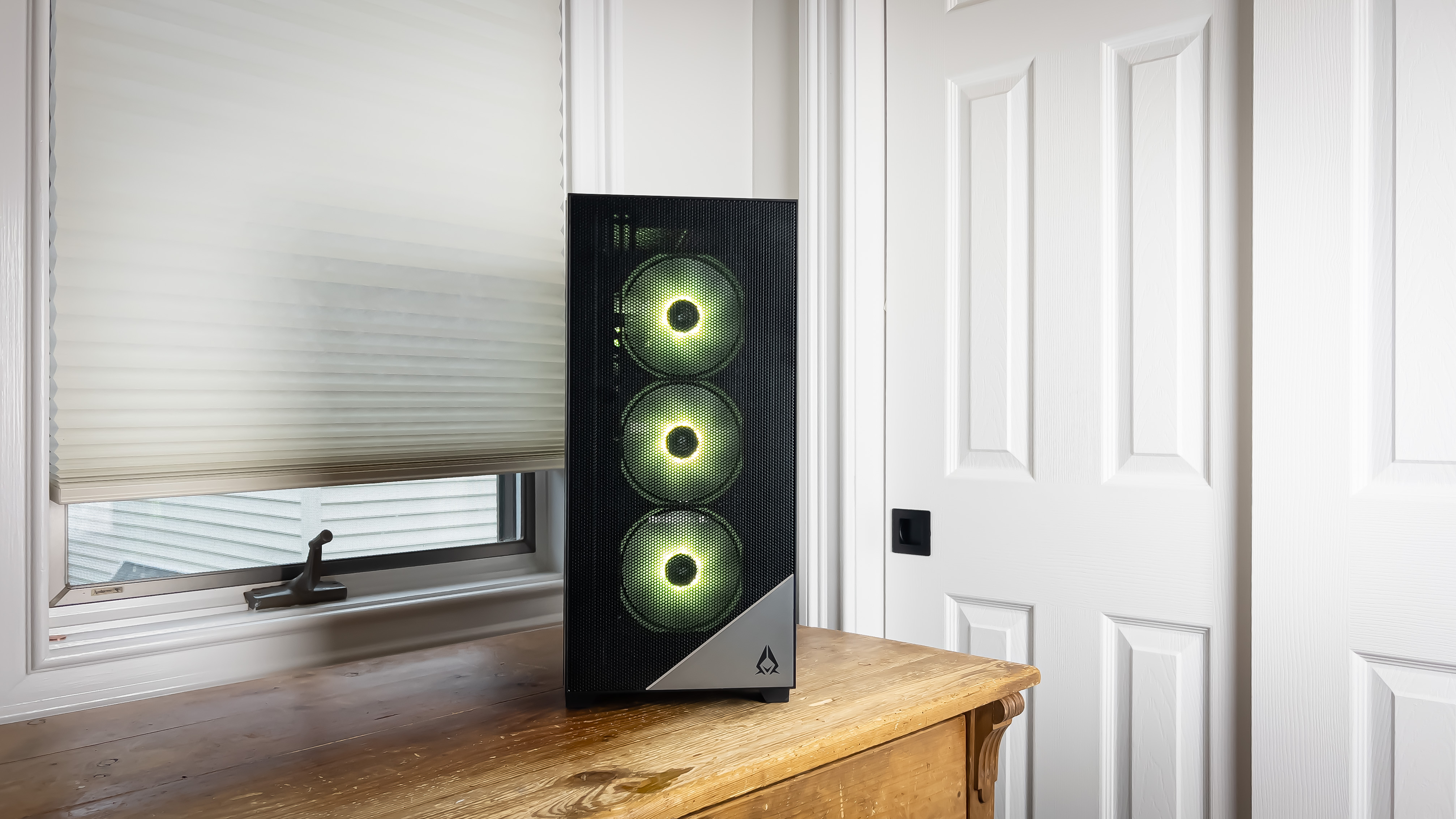Tom's Hardware Verdict
With four ARGB fans and a mesh front and side panel for just $110, the Azza Aero 480 is an intriguing case. But don’t expect all that mesh to result in excellent temps.
Pros
- +
Four PWM ARGB fans included
- +
Decent price
- +
Simple, yet different design
- +
Lots of cooling options
Cons
- -
Doesn’t cool as well as expected
- -
Lacks cable management features
- -
Expansion slot area is easily bent
Why you can trust Tom's Hardware
When I think of Azza, the first thing that comes to mind is its geometric cases, like the company’s Cube and Pyramid lines. It’s safe to say that Azza mostly caters to a niche case market, at least in the US. However, the new Aero 480 is much less adventurous in terms a design, but still exciting thanks to loads of mes and four PWM ARGB fans for its $110 asking price.
With its budget-friendly price and generous seemingly generous feature set, can the Aero 480 earn a spot on our Best PC Cases list? As always, we’ll have to run our test suite to find out how it performs, but first here are the case’s specs, direct from Azza.
Specifications of the Azza Aero 480
| Type | ATX Mid-Tower |
| Motherboard | Mini-ITX, Micro ATX, ATX |
| Support | |
| Dimensions (HxWxD) | 19 x 8.67 x 17.3-inches |
| Max GPU Length | 15.7-inches |
| CPU Cooler Height | 6.69-inches |
| External Bays | X |
| Internal Bays | 3x 2.5-inch, 1x 3.5-inch or 4x 2.5-inch drives |
| Expansion Slots | 7 |
| Front I/O | Power, RGB control, 2x USB 3.0, 1x audio and 1x microphone jack. |
| Other | Mesh Side Panel |
| Front Fans | 3x 120mm fans |
| Rear Fans | 1x 120mm fan |
| Top Fans | None |
| Bottom Fans | None |
| Weight | 13.5 pounds (6.12 kg) |
| Warranty | 1 year |
Features of the Azza Aero 480
The Azza Aero 480 is an airflow-focused mid-tower chassis that ignores the tempered glass sidel panel, substituting it instead with a mesh one. I initially assumed that the thermal performance with the mesh side panel would be incredible. But as we’ll find out later in testing, I was wrong.
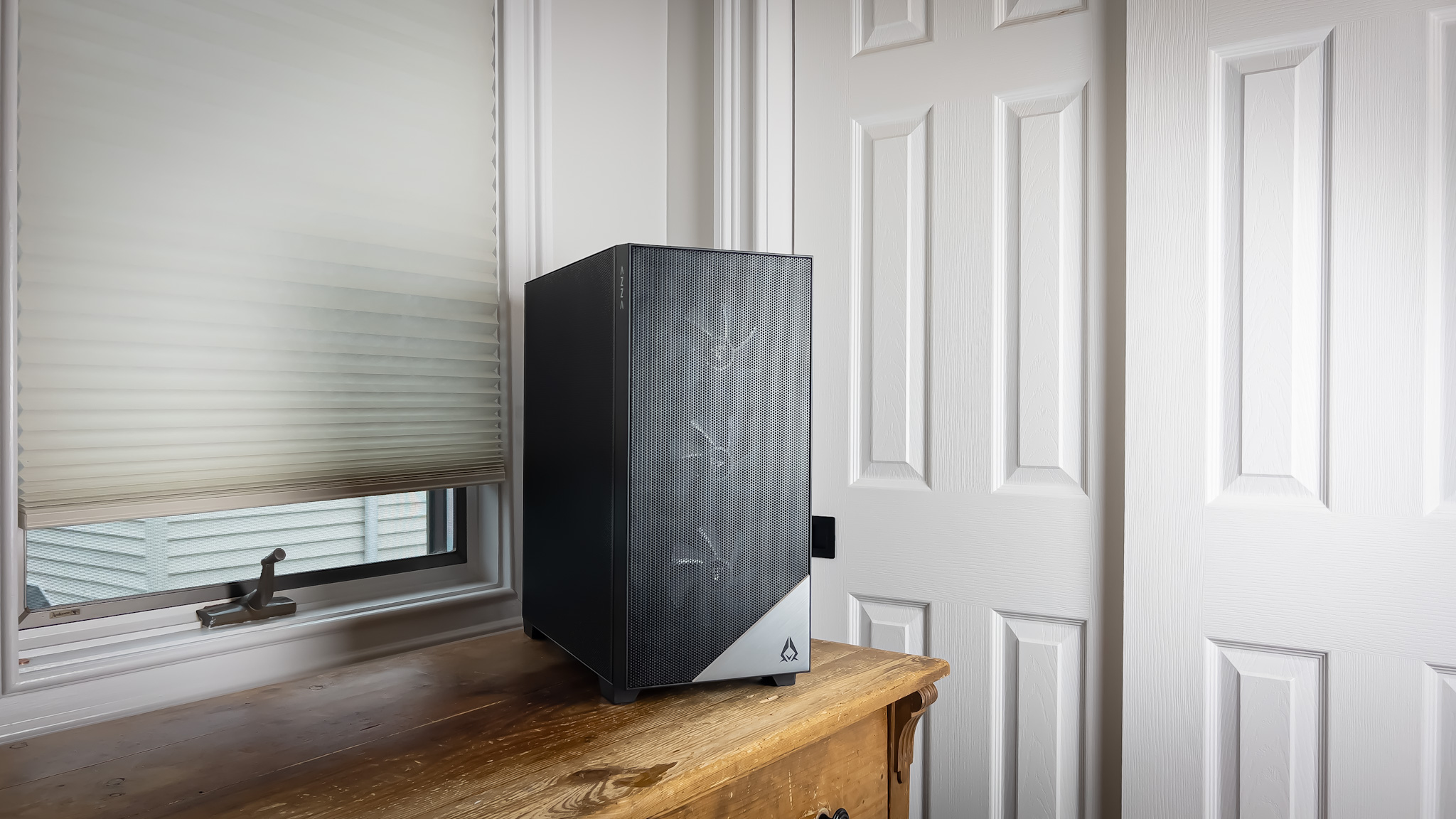
Despite the absence of glass, the Aero 480 follows the trend of the most popular cases in mid-2022, with its mesh front and 120mm RGB fans. Azza was very generous with the included fans, as they’re all 4-pin and the RGB is addressable.
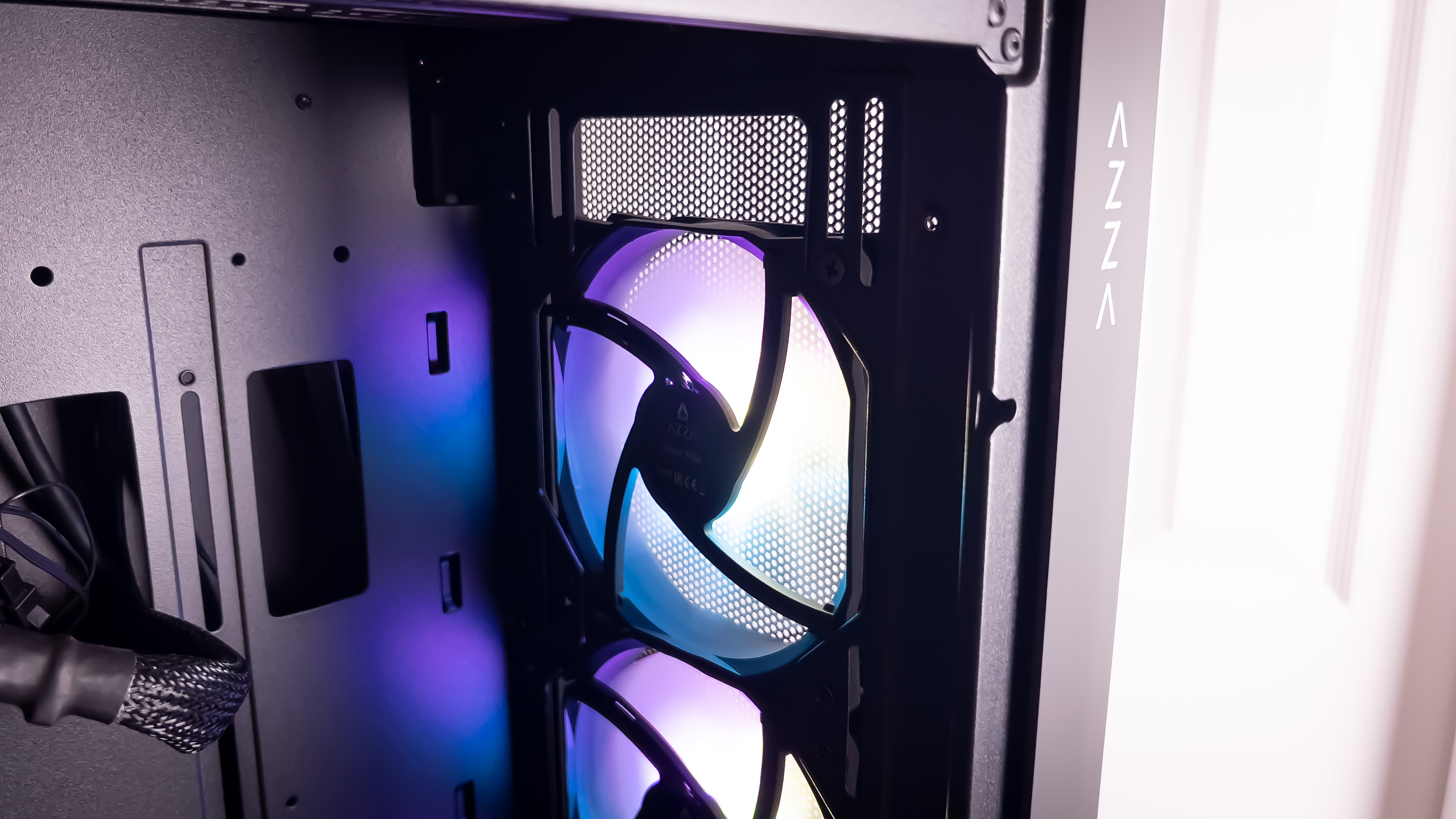
Where we see cost-cutting, though, is in the PCIe slot covers; the covers need to be broken off to install devices, and the metal is so thin that doing so resulted in a warped bracket. Azza: this is 2022, not 2002; PCIe covers shouldn’t be designed this way, especially in cases that cost over $100.
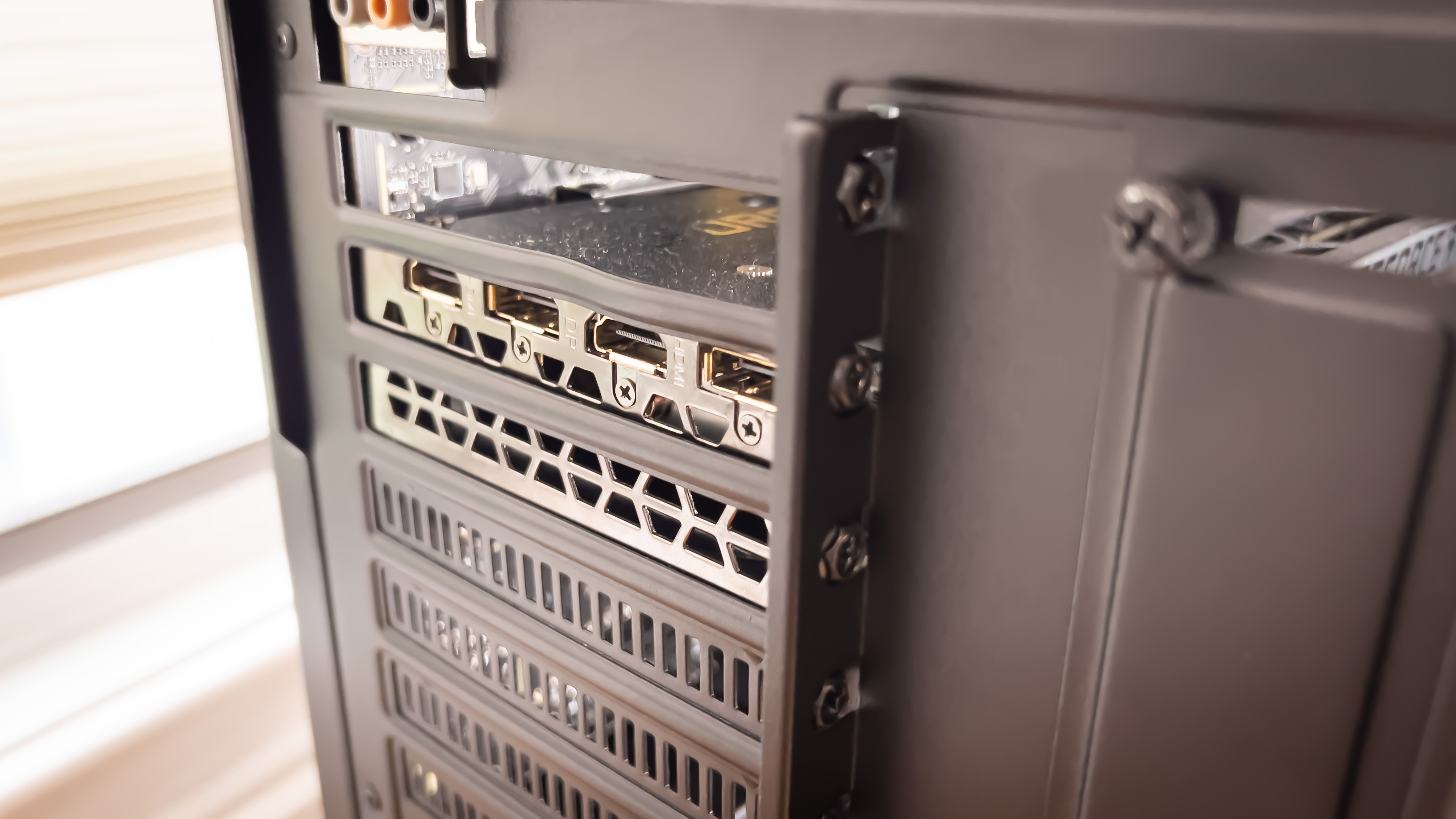
The IO on the Aero 480 is nothing special, as you only get two USB 3.0 Type-A ports, RGB controller, audio and headphone jack and the power button. Personally, I’m not bothered by the lackluster IO, as I primarily use my motherboard instead. But a USB-C port would be a nice add here.
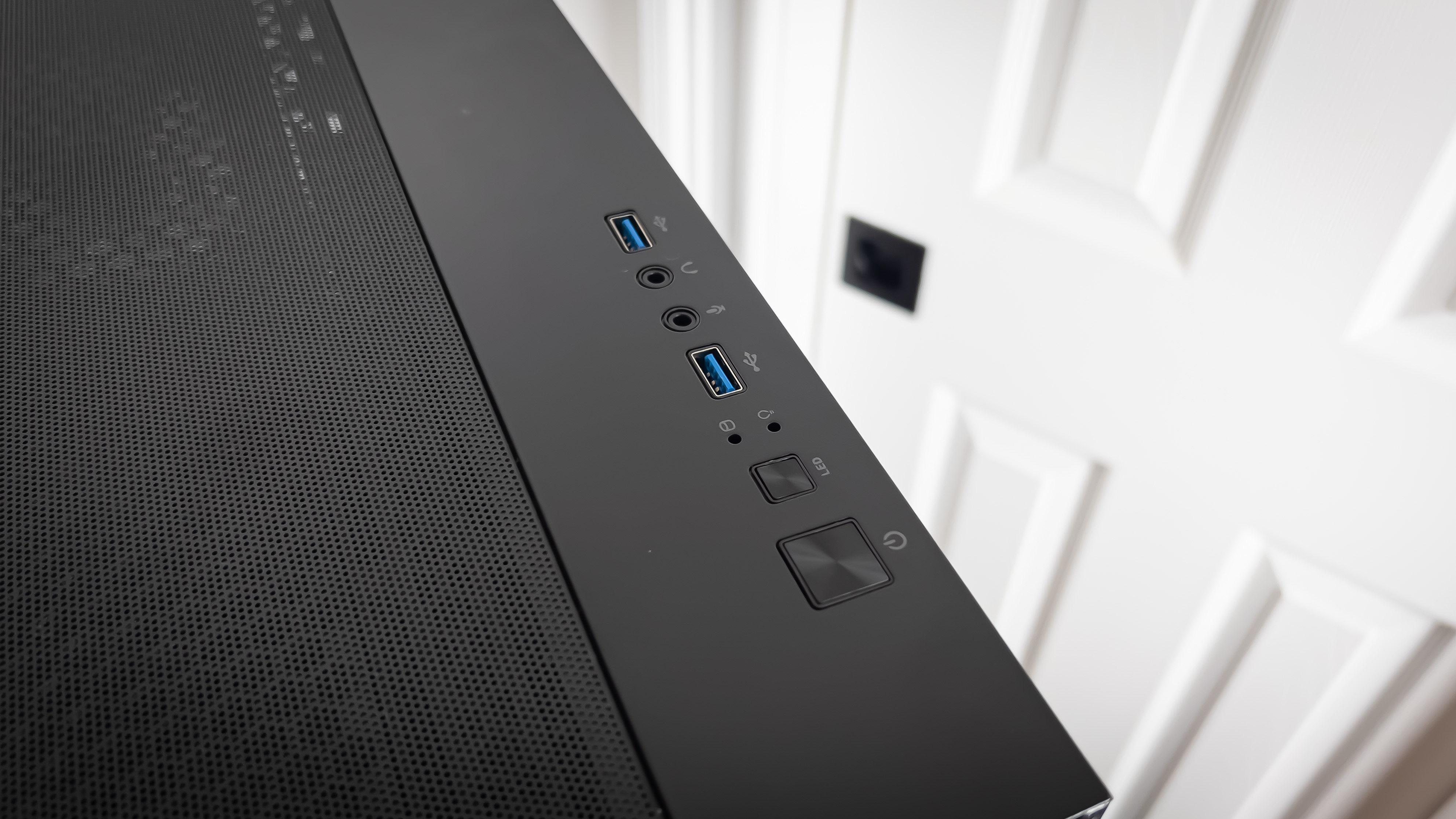
Internal Layout
The Azza Aero 480 measures up similarly to most mid-tower chassis, at 19 x 8.67 x 17.3-inches (HWD). The interior design of the case is a bit bleak. You won’t find cable grommets or routing cut-outs behind the motherboard tray. While there’s enough room to fit the necessary amount of cables behind the motherboard area, some guides would be appreciated, especially for first-time builders.
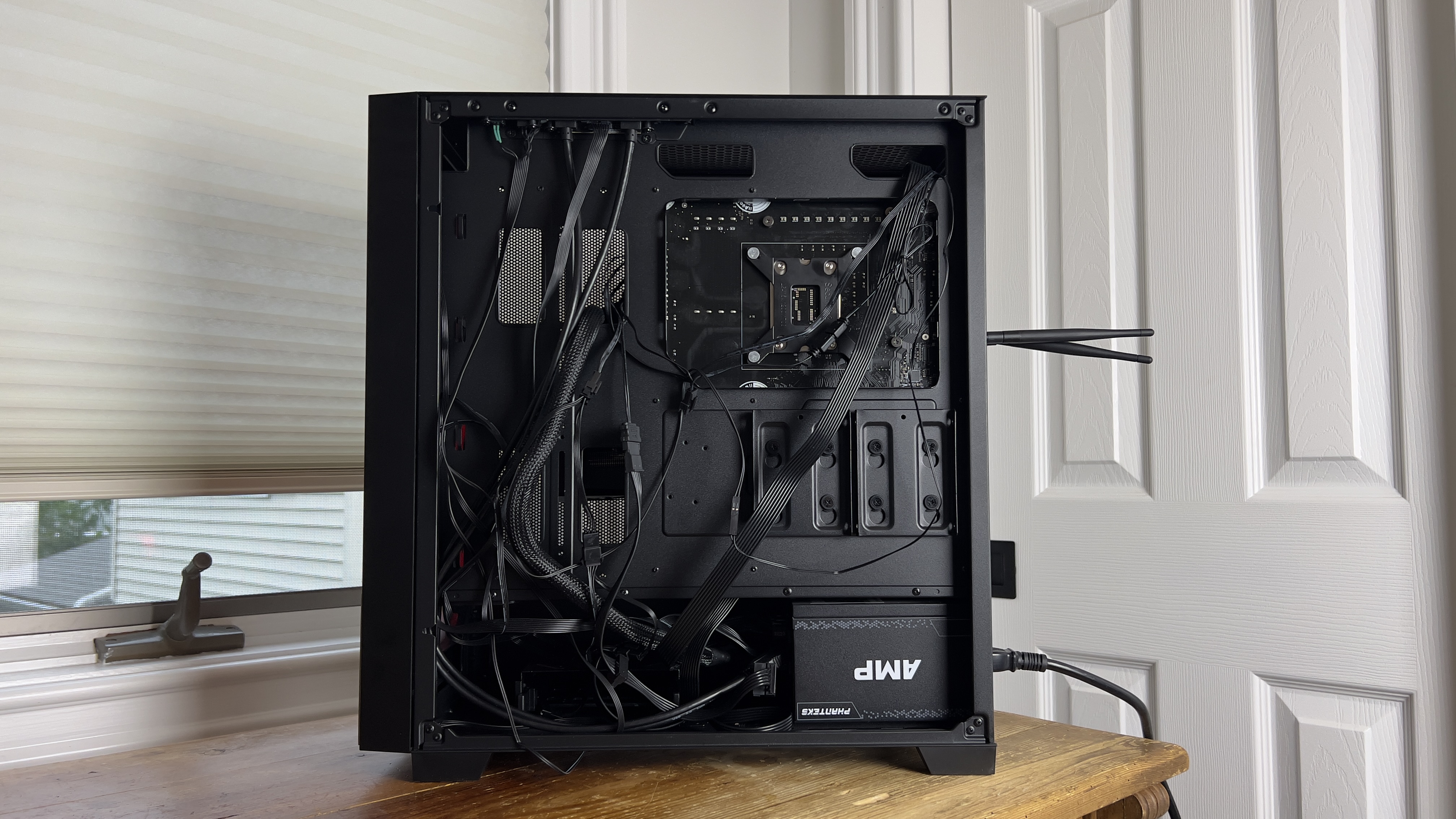

The number of storage devices the Aero 480 can fit isn’t particularly generous. You can mount four 2.5-inch drives total, or two 2.5ers and two 3.5-inch mechanical drives. Given that most motherboards now come with multiple M.2 slots, this should be enough for most people, but there’s clearly room for more storage in the case.
Azza Aero 480 Cooling Options
The Azza Aero 480 is the first ATX case I’ve worked with that features a side panel made entirely of mesh. And because of that, I was interested in its cooling capabilities. The front of the Aero 480 can fit radiators up to 360mm or up to four 120mm fans. On paper, that’s a lot– especially for a mid-tower. The top of the case is more traditional, with a capacity for three 120 or two 140mm fans, or up to a 360mm radiator. The rear only supports a single 120mm fan/radiator, which is pretty standard.
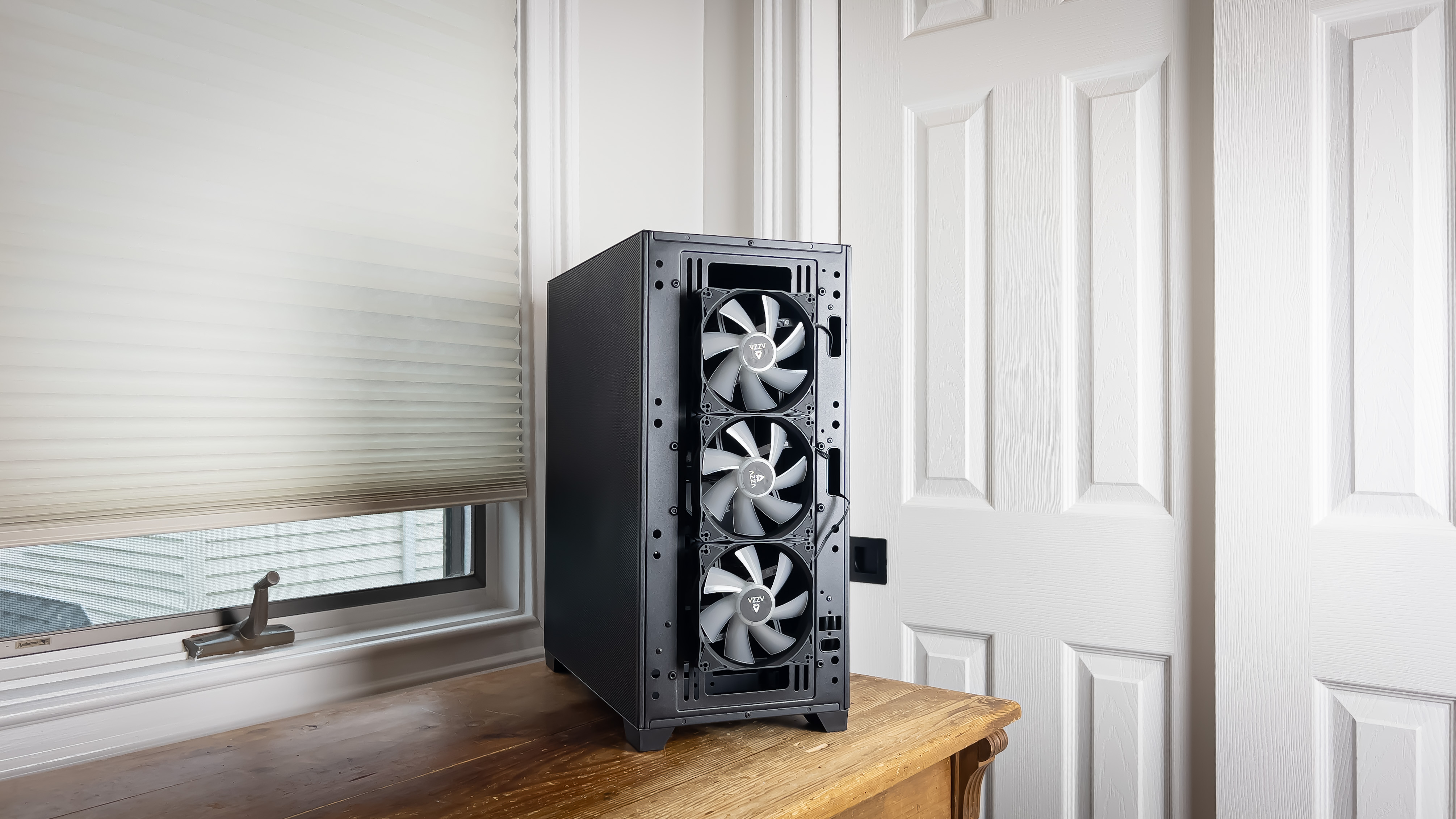
Your new Geforce RTX 4090 Founder’s Edition will fit in this case, as the maximum GPU length is 400m (15.7-inches). And a new AMD Ryzen 7950X can be cooled by your Noctua NH-D15, as the maximum CPU cooler height is 170mm (6.69-inches).In short, you shouldn’t run into GPU or CPU cooling clearance issues here unless you have something very extreme going on in your system.
Testing Hardware
Our testing hardware uses Intel’s 12 Gen “Alder Lake” platform. We’re using a Core i7-12700KF, which is being cooled by a Noctua U12s air cooler. Our graphics card is a Gigabyte RTX 3070 Ti Gaming OC. Our motherboard is the MSI Pro Z690-A WIFI.
Acoustic Results for the Azza Aero 480
Our acoustic test consists of three scenarios: We run the CPU at full load, the CPU and GPU at full load, and an optimized mode. The CPU full load test runs the CPU and case fans at their maximum speed. For the CPU and GPU full load acoustic test, we also stress the Gigabyte RTX 3070 Ti Gaming OC and set the fans at 75% speed, because in gaming, the fans never run at 100 percent and are far too loud when they do.
For the optimized mode, we run the GPU fan speed at 30% and the CPU and included case fans at the lowest speed they will spin.
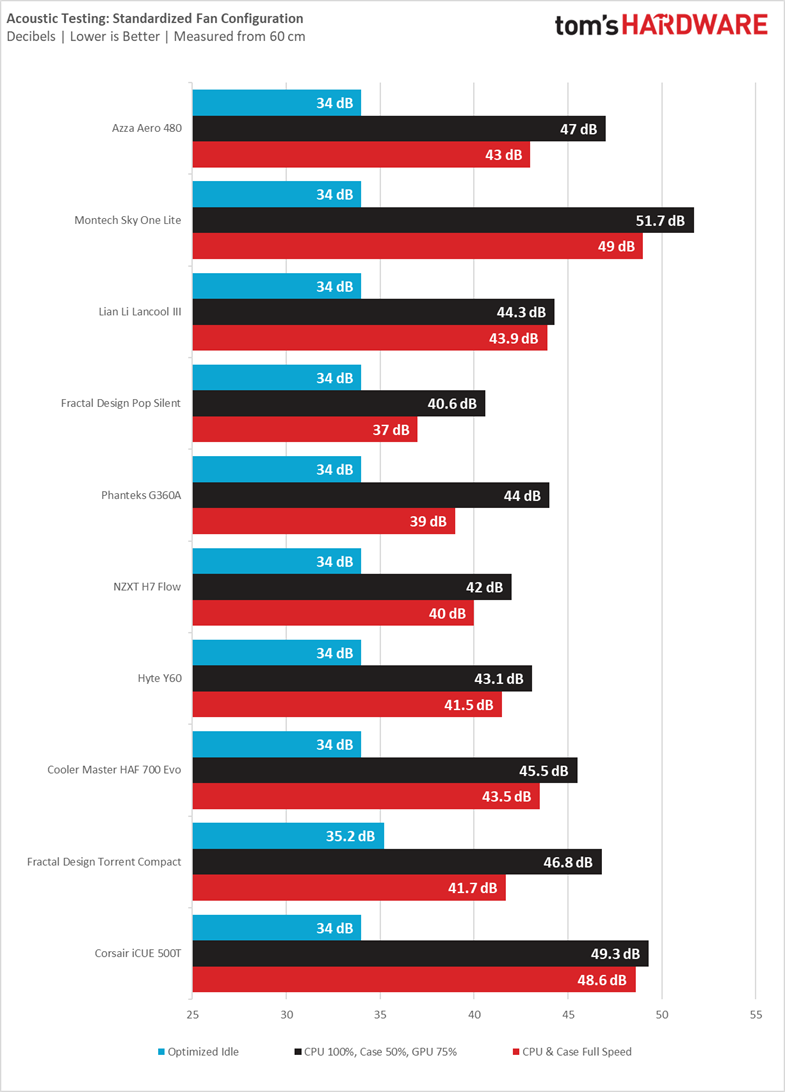
Unsurprisingly, given the profoundly porous nature of this case, the acoustic test results for the Aero 480 weren’t great. But honestly, the Aero 480’s loudness isn’t that bad when you consider that there's more airflow in this chassis than most. Now if only all that arifly actually resulted in drastically lower temperatures.
Thermal Results for the Azza Aero 480
For the thermal tests, all case and CPU fan speeds are set to 100%. The Core i7-12700K is set at a 4.7GHz clock at 1.3v on all performance cores to ensure consistent power consumption across test scenarios. Letting the GPU run at 75% fan speed enables it to maintain its power target while sticking to one set reasonable fan speed, so the temperature is the only variable.
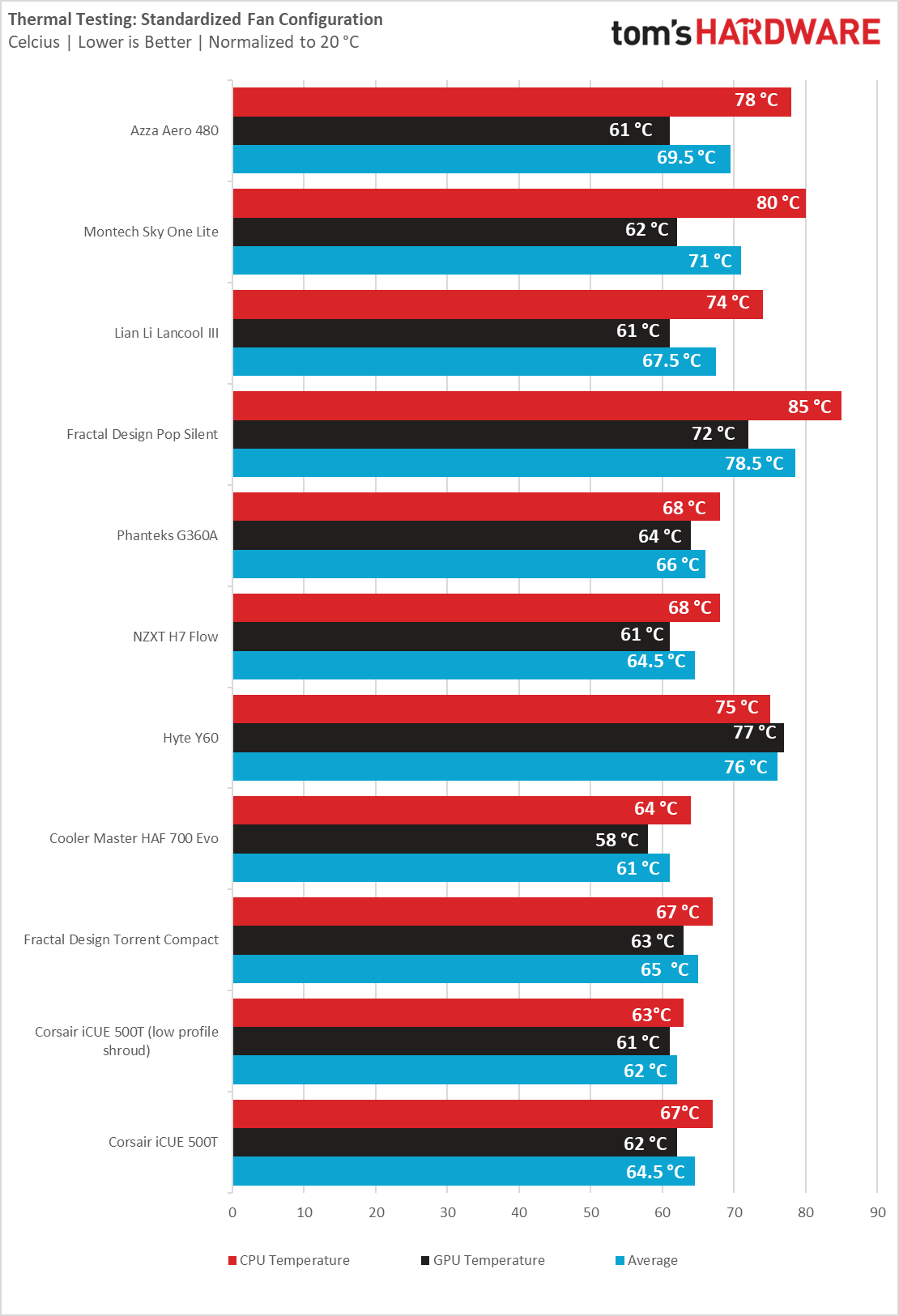
When I got the Azza Aero 480, I was intrigued by the mesh side panel because it’s something that I haven’t seen before–at least specifically in a case this large. Before testing, I hypothesized that the thermals would be great because the mesh meant more airflow. However, a friend pointed out that the mesh could actually interfere with the airflow path, whereas a solid material, like glass or metal, would keep the air moving through the case front to back, moving over the heat-generating components. Ultimately, my initial thought was wrong, and the Azza Aero 480 produced unexpected thermal testing scores, with CPU and average temps landing on the higher side of our comparison cases, rather than the lower end.
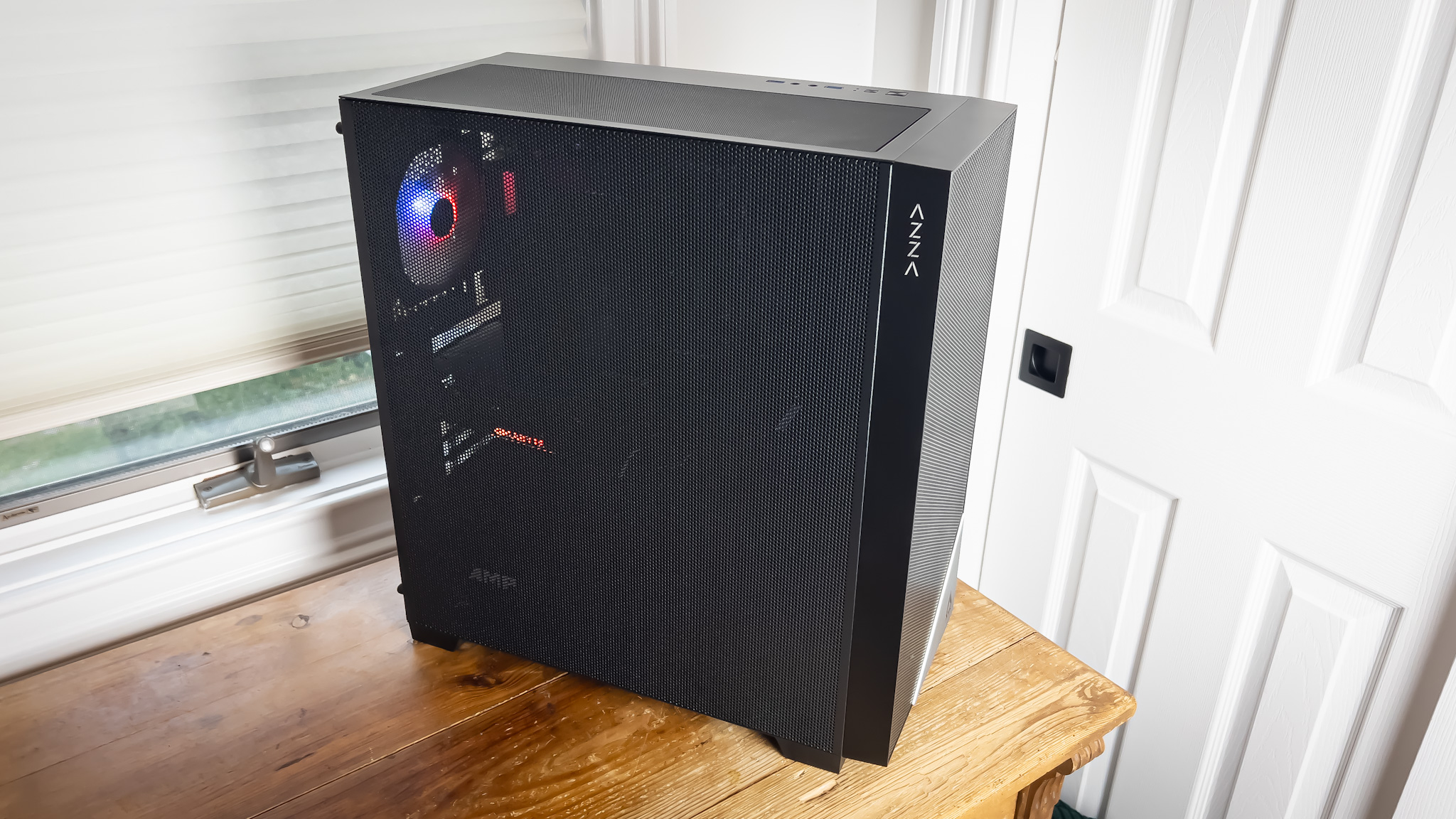
If you’re using an AIO radiator mounted up top, these temps might be less of an issue. But at the very least, this proves that more mesh isn’t always for the best.
Bottom Line
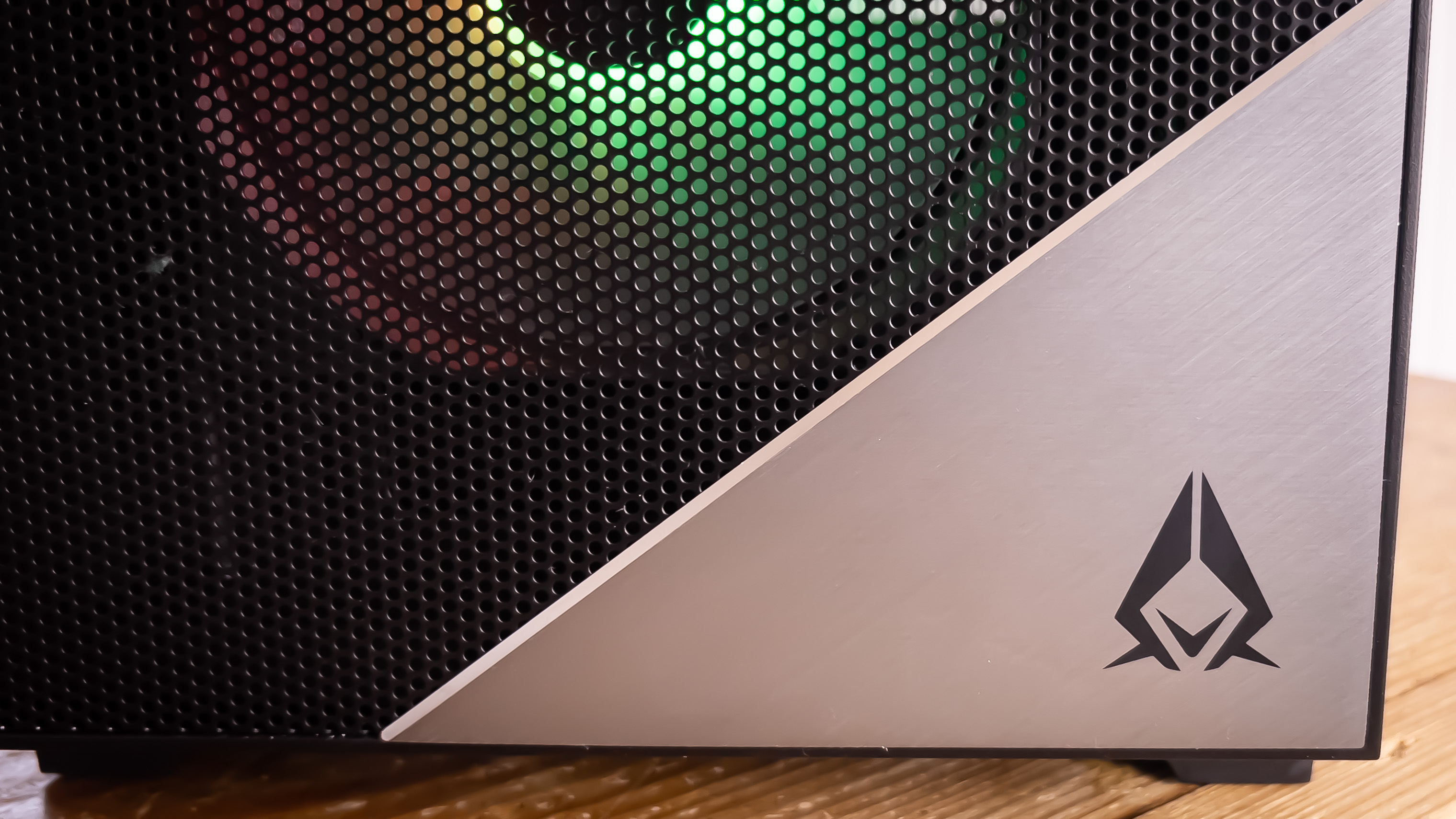
Overall, the Azza Aero 480 is a pretty solid case for its price of $110. The four pre-installed PWM ARGB fans are an astounding inclusion for the price, but the mesh side panel is a bit deceiving. And design, particularly at the rear expansion slot area, feels cheap and bends easily.
The mesh side panel on the Azza Aero 480 is is intriguing (if not exactly as performance enhancing as you might think), and the four ARGB fans are appreciated, but that’s really all there is that’s unique or impressive here. Once again, Azza has made another niche case, which isn’t a bad thing. But unless you’re specifically looking for a mesh side panel and lots of light-up fans, then I would skip this case. At this price, there are many better options, like the Phanteks Eclipse G360A, which performs and feels better, costs less, and also comes with lots of RGB.

Myles Goldman is a freelance writer for Tom's Hardware US. He reviews keyboards and cases.
-
boe rhae Last sentence under the acoustic results:Reply
"Now if only all that arifly actually resulted in drastically lower temperatures. "
Arifly? -
pixelpusher220 Reply
Airflow amirite?boe rhae said:Last sentence under the acoustic results:
"Now if only all that arifly actually resulted in drastically lower temperatures. "
Arifly? -
Fruban I wonder if orienting the GPU differently with fans facing the mesh side would make a difference pulling in air more directly from the outside.Reply -
thestryker I have a suspicion that this case would require net negative pressure to be viable at cooling. I'd bet rearranging the fans into a single intake with two exhaust mounted top back would net better results.Reply -
RIMPAC This case is nearly a replica Deepcool Matrexx 55, the finish and layout nearly the same and the price is way too over.Reply
